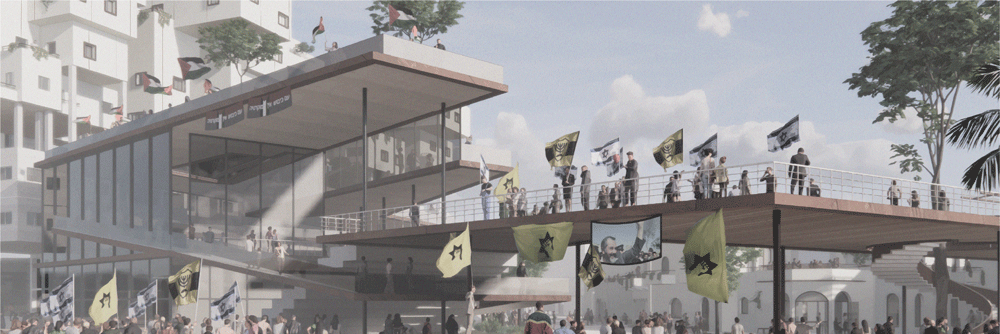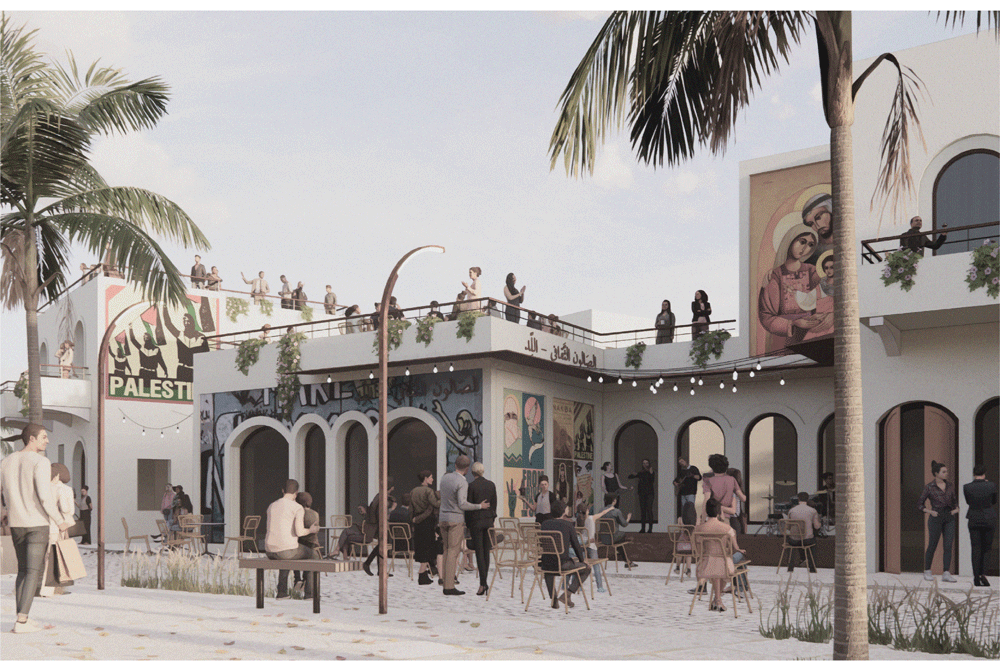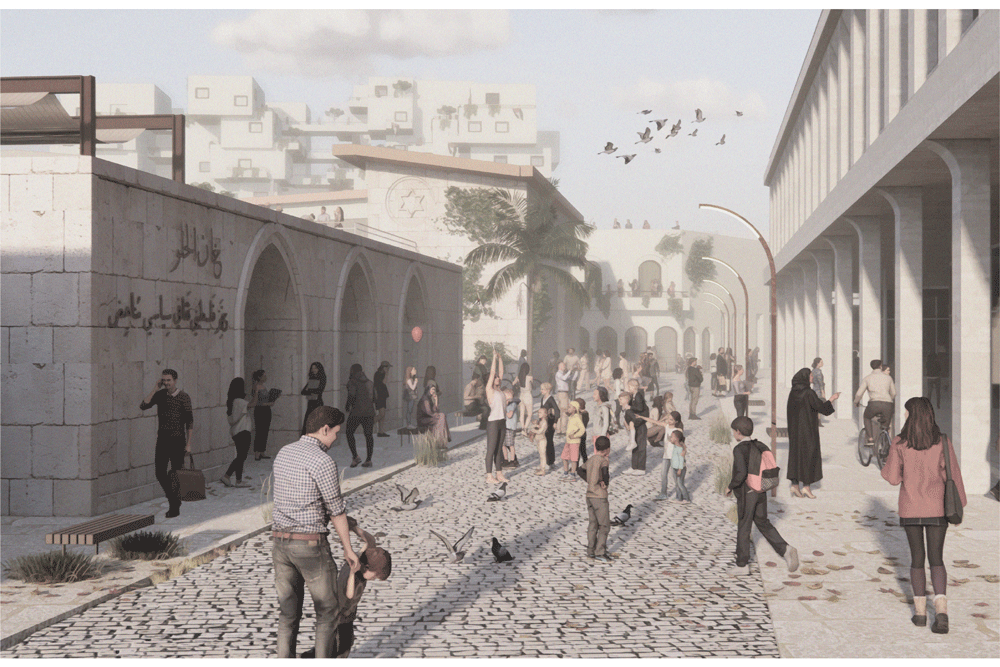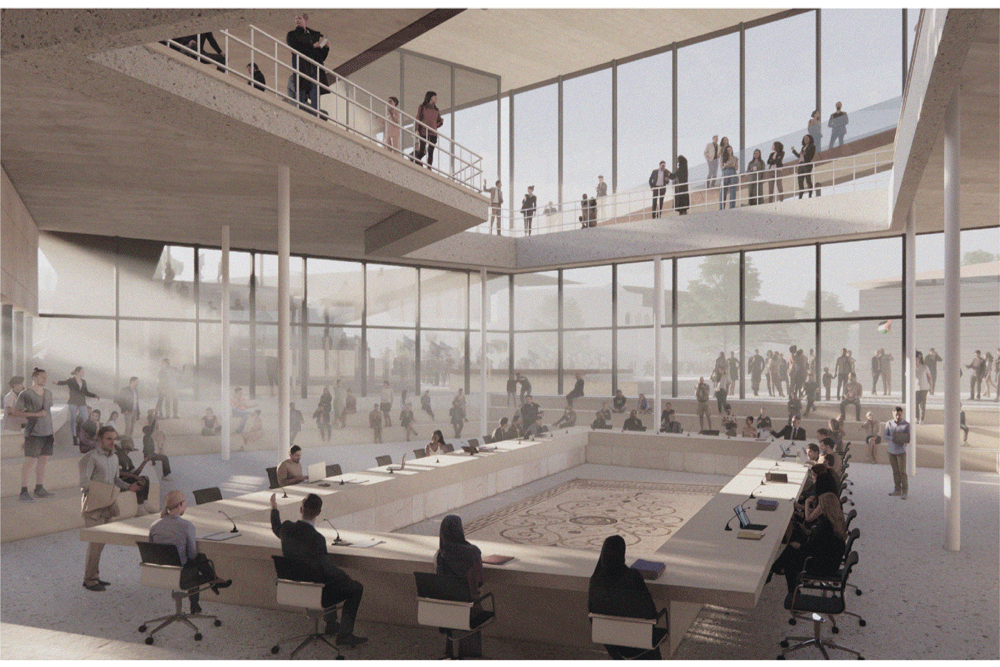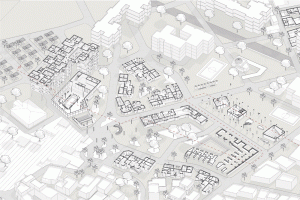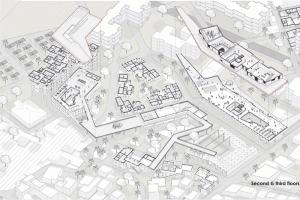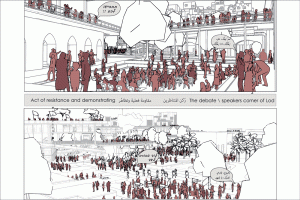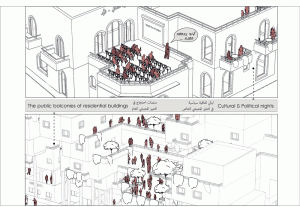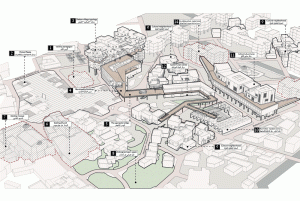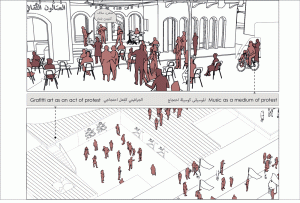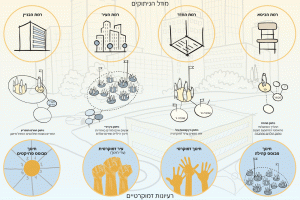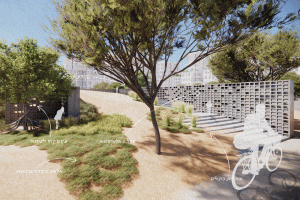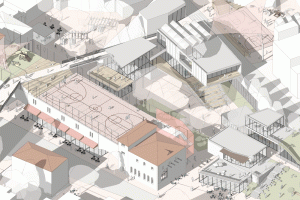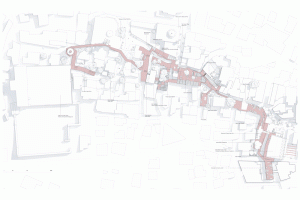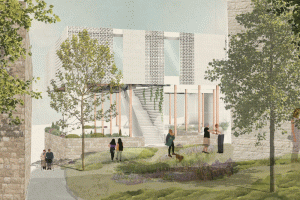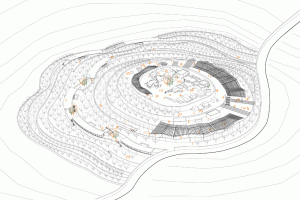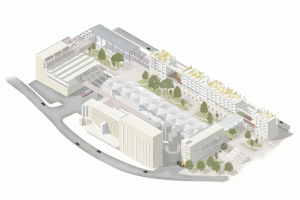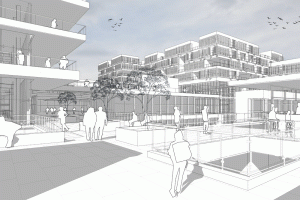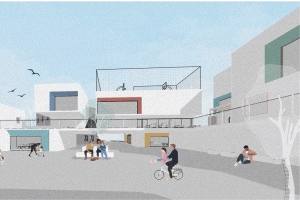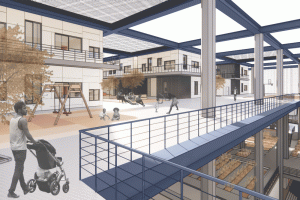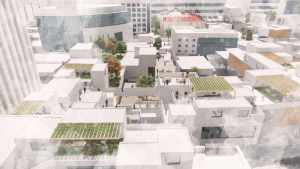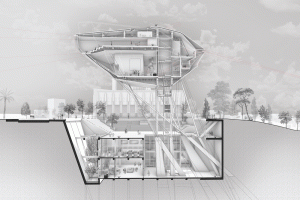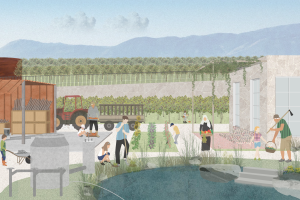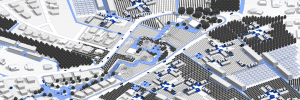One City for Two Nations—Agonistic Spaces
The project is based on the research of Professor Chantal Moff, a political science researcher who discusses the concept of agonism. Agonism is a political philosophical concept that sheds light on the importance of conflict and its presence in political systems. Any attempt to solve this conflict will cause negative consequences, and, as architecture cannot deal with or solve conflicts, we should plan and design spaces in which such conflict can be expressed. The project deals with conflict spaces via a case study Lod, a mixed city with layers of national, historical, and spatial conflict, and with a Palestinian Arab minority that has been suffering from racism and oppression for decades. The city became uncontrollable during Shumer Humot, a series of events that led to many instances of violence between Arabs and Jews, which, in turn, led to the murder of Musa Hasona. Following these events, many tensions that existed in the city surfaced and became more visible than ever. This raises questions about how architecture should intervene, and how it can deal with the new situation. In particular, how can we create a fabric of agonistic protest spaces (spaces that represent the conflict and provide a platform on which it can be expressed) to address the national–political crisis in the city of Lod, and how can protest spaces be the main generator of urban planning? Such planning involves a fabric of agonistic protest spaces, each of which is characterized by a different architectural agenda. Some of the spaces deal with the development of open public spaces (e.g., the protest square), others with the preservation and utilization of existing historical spaces (e.g., the Khan Elhil), and still others with the addition and planning of architectural masses and buildings with diverse programs that serve various agendas (e.g., a city hall that represents the governing power or a political building that connects the Arab school with the pre-military college). The different spaces are connected by an elevated bridge that derives its shape from Palestinian infrastructure. This bridge passes through almost all of the abovementioned spaces and provides a third dimension (via height) to create another layer of space and more places to protest.


